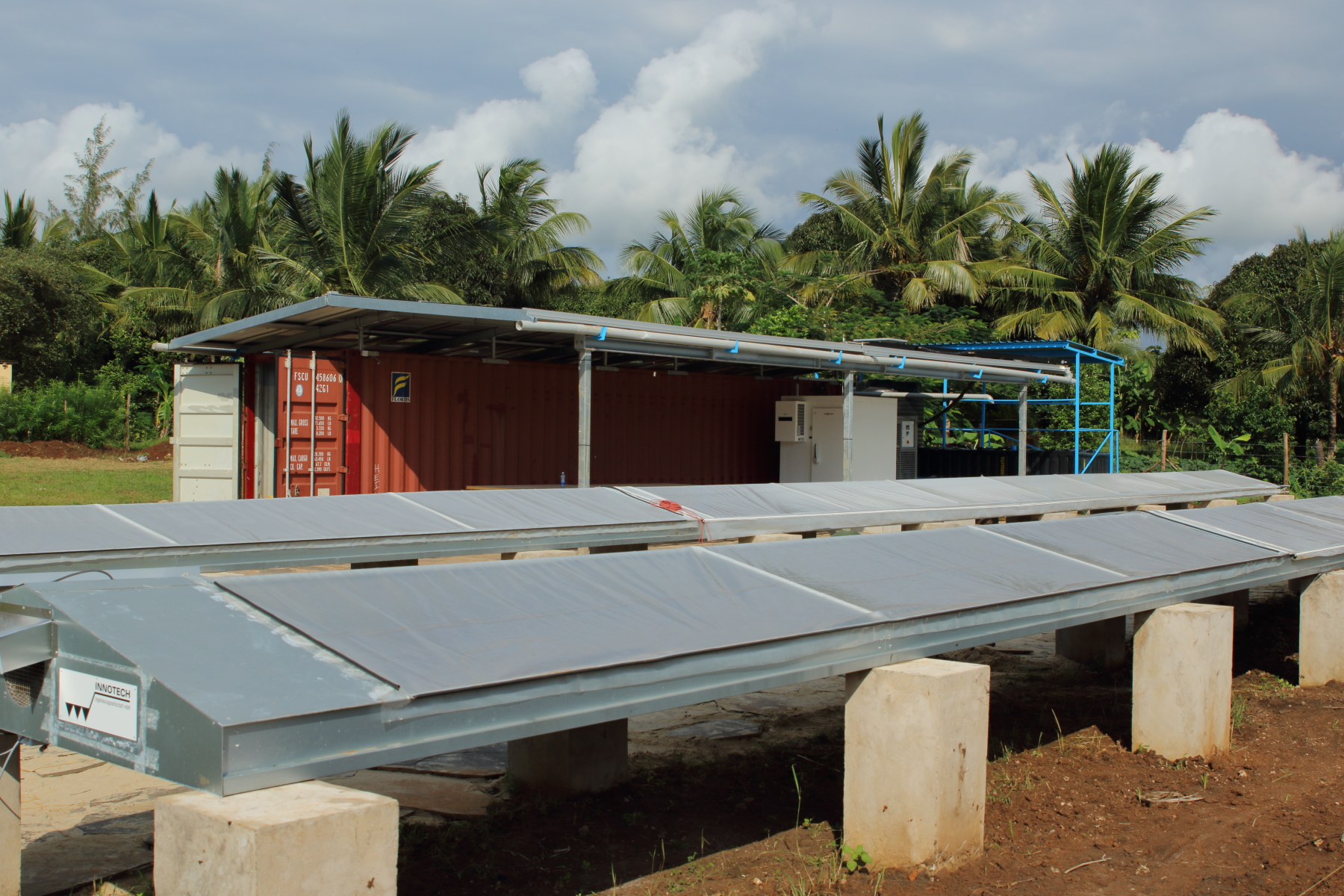Fraunhofer ISE Develops Solar-Powered Ice Maker and Solar Dryers for Fishermen and Farmers in Kenya
In Africa, up to 30 percent of agricultural or marine products such as fish spoil on their way to market due to a lack of refrigeration or preservation facilities. Not least, this is due to the lack of an electrical infrastructure in rural areas. In the SolCoolDry cooperative project, the Fraunhofer Institute for Solar Energy Systems ISE developed a system for solar-assisted ice production and solar drying of foodstuffs. The system has now been handed over to the local community in Mwazaro in southern Kenya.

In the project, funded by the German Federal Agency for Agriculture and Food (BLE), Fraunhofer ISE cooperated with Innotech Ingenieursgesellschaft mbH of Germany and the Kenya Industrial Research and Development Institute KIRDI, the Kenya Marine and Fisheries Research Institute KMFRI and the Technical University of Mombasa. "The project objective was to provide concrete help to the local people and to develop a system that they can operate on their own," says project manager Dr. Alexander Morgenstern. By cooling and drying fish, as well as vegetables and other products, farmers and fishermen are able to avoid spoilage and bring more products to the market. The preservation of foodstuffs also enables them to sell products off-season, thus creating a secure income base and generating higher revenues.
The first part of the SolCoolDry system consists of a 15 kWp photovoltaic system that feeds electricity into a three-phase, battery-supported stand-alone grid, which is used to power the ice machine and cold room. A maximum of 1500 kilograms of ice can be produced within 24 hours. Excess solar power is fed into batteries with a total storage capacity of 19.2 kilowatt-hours. Secondly, the SolCoolDry system also has two solar tunnel dryers in which air is heated and distributed by fans over the dry goods throughout the day. In order to be able to continue drying throughout the night, one of the tunnel dryers contains heating pipes. These are supplied with heat from a 12 square meter flat-plate collector and a 2000-liter hot water storage tank.
One problem for the project team was the severe travel restriction due to the Covid pandemic. This made it impossible to set up the system on site. "As a result, we created a video tutorial instead, which enabled our Kenyan partners to set up the system largely on their own," explains Alexander Morgenstern. After the electrical commissioning took place by Norbert Pfanner of Fraunhofer ISE, the system was handed over to the local partners in August this year. The Beach Management Unit, an association of fishermen, mangrove planters, farmers, beekeepers and seaweed farmers, will be jointly responsible with the KIRDI for the operation of the system. User fees for the dryer and the sale of the ice will serve to finance the plant maintenance, which shall ensure the sustainability of the project. Fraunhofer ISE will remotely monitor the performance of the plant with a monitoring system.
In October 2022, Fraunhofer ISE will hold a training workshop with the local partners to discuss the further development of the system. "We would like to find out together how it can be built cheaper, smaller and with locally available components. The system is also meant to serve the exchange of knowledge," says Alexander Morgenstern, looking into the future.
Downloads and Links
Last modified: